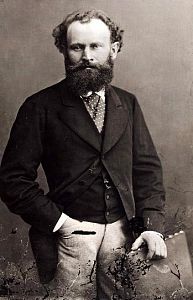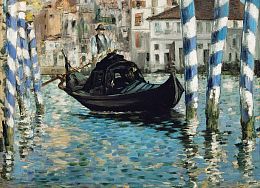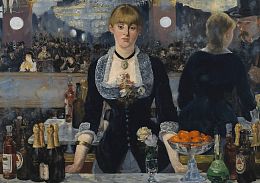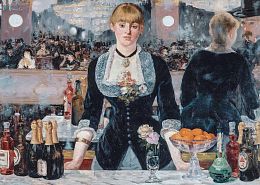
Edouard Manet
Manet Edouard (1832-1883), a French painter and graphic artist, anticipated the emergence of Impressionism with his art and became one of its founders. Almost all his life, Manet's work has faced opposition and difficulties. His father was the head of the department of the Ministry of Justice and was preparing his son for a career as a lawyer. He was an ardent opponent of art education for his son. And the young artist has to constantly struggle with the demands of an influential father, which forces him to leave home. The study of painting in the academic style and the manner of romanticism (fashionable at that time), does not attract Eduard. He constantly studies the works and creativity of artists of the past, visits many museums and travels a lot (Italy, Venice, Florence, Holland, Dresden, Prague, Vienna). One of the artists who had the greatest influence on Manet is Velasquez. He embodies the accumulated knowledge and vision in his works. Eduard persistently strives for recognition in Paris, but his early works are rejected by critics. The rejection of the works, applicants for participation in the Paris Salon, forced Manet to hold an exhibition called the Salon of the Outcasts. The artist had high hopes for the recognition of his painting "Breakfast on the grass", but it was criticized and caused laughter among the visitors of the salon. But the painting aroused the greatest attention and became a symbol of the "Salon of the Outcasts" of 1863. Manet is seeking fame, albeit scandalous. Manet's innovative painting was fiercely attacked by critics who considered the artist a rebel in art. Using and rethinking the plots and motifs of the paintings of the old masters, Manet sought to fill them with a sharp modern sound, polemically introducing into the well-known classical compositions of modern man ("Breakfast on the grass", 1863). At the end of the 1860s, Manet became close to E. Degas, K. Monet, O. Renoir and switched to plein-air painting; deaf and dense tones with a predominance of dark colors were replaced by lighter and freer painting ("In the Boat", 1874). The main theme of Manet's works are scenes of Parisian life ("Nana", 1877; "In the tavern of Papa Latuille", 1879). In his most significant and profound work, the Folie Bergere Bar ( 1881-1882) shows the illusory and illusory nature of happiness in the midst of sparkling, festive fun. Manet addressed a wide variety of topics, painted portraits, still lifes and landscapes, acted as a draftsman, master of lithography and etching. Manet's work breathed new life into the French art of the 19th century and largely determined the main ways of further artistic searches in painting. Since 1881, he has been ill with ataxia - a violation of coordination of movements. The artist's further life is connected with the constant development of the disease. On April 19, 1883, his left leg was amputated, and 11 days later he died in terrible agony.




